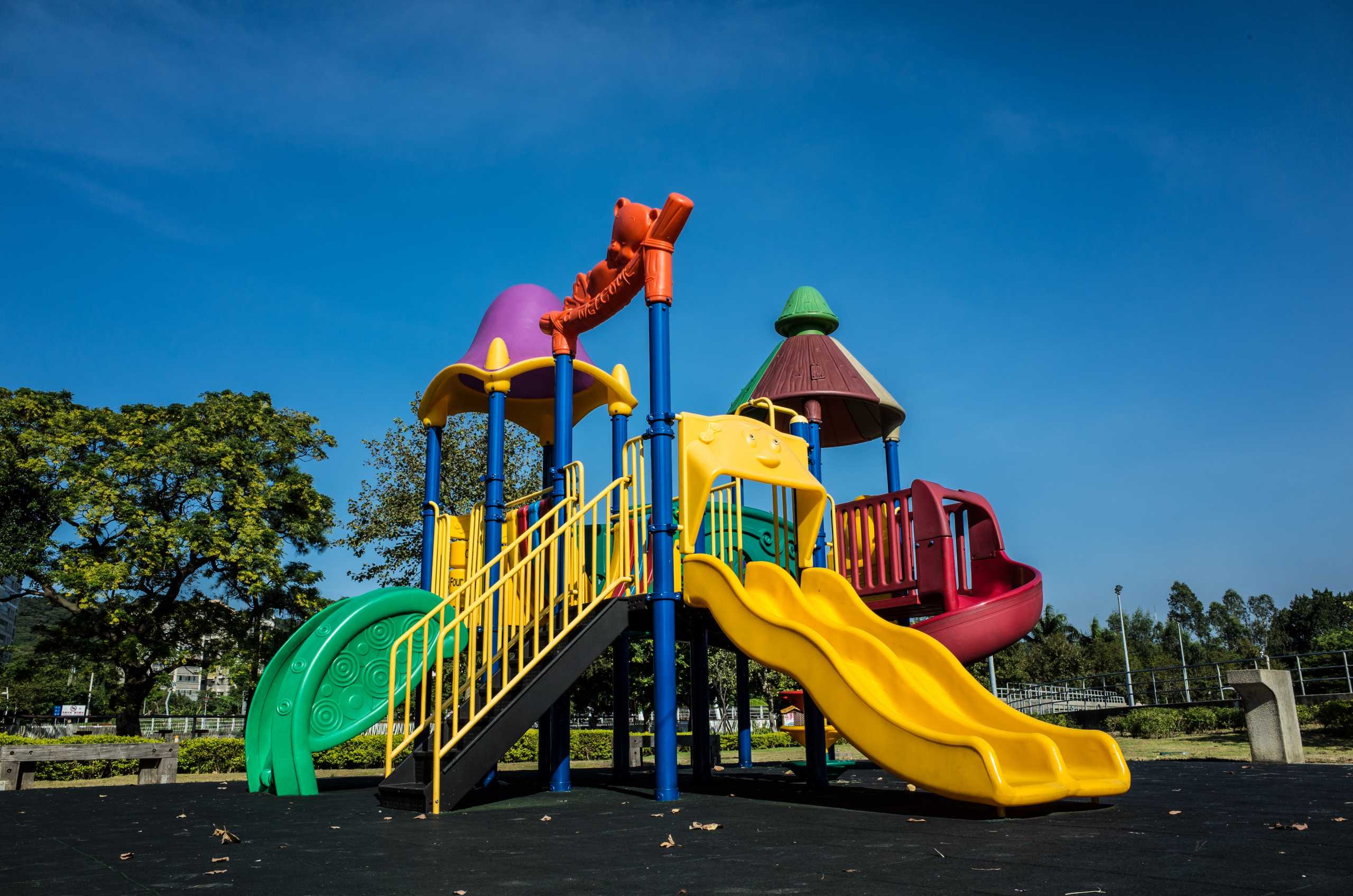Since I became a parent, I’ve been on the lookout for the best local park. Before parenthood, I didn’t give them much thought. Maybe an especially good one would have caught my eye, but the idea of community spaces faded into the background in my 20s, as I was a bit more focused on figuring out who I was.
Now, I’m always giving parks and other public spaces a critical once-over. Is it maintained? Is it next to a major road? If it is, are there fences or blockades to protect kids from cars? Does it have parking? Does it have a bathroom? Do the bathrooms have changing tables in both the women’s and the men’s rooms? Are there gender-neutral bathrooms? Accessible bathrooms? Is there shade? Is there seating? Are there pieces of equipment for all ages and abilities? Does the design of the park spark community or isolation? The list goes on, and it is always surprising how much room for improvement there is—tiny changes that would have a huge impact, like placing a garbage can nearby, or changing where the entrance is.
Parenthood and the pandemic snapped community and community design into sharp focus for me. I remember going on solitary runs during April 2022, seeing the basketball court by my house taped off in an effort to prevent the spread of COVID-19. The space, which was always filled with kids playing pick-up games or adults in recreational leagues, was now empty, with the caution tape barricading it flapping in the breeze—a physical reminder of how uncertain and terrifying the daily news was.
Then, as we learned more about the virus, our approach to public spaces evolved. I remember seeing pictures of NYC Parks employees painting social distancing bubbles into the city’s green spaces in summer 2020—an innovative way to allow folks to access fresh air and green space while staying safe (there was so much we still did not know about transmission!). State and national parks waived entry fees, outdoor dining became all the rage, cities shut down entire streets to allow for pedestrians to social distance, and drive-ins exploded in popularity. It was a time of great sorrow and fear, but also great ingenuity as urban planners and community governments reimagined how our towns and public spaces could serve us better and keep us safer.
As we move towards a new normal, transforming communities and public spaces to serve residents continues to be of critical importance. And not just to parents like me, who need a safe place for their kid to dig in the dirt and go down the slide 500 times. A recent Sequential Intercept Model Mapping Workshop in Bannock County, Idaho, identified transportation and housing as critical to behavioral health and criminal legal system transformation. Community design impacts us all, whether we are actively looking for it or not.
The conditions in our environment are social determinants of health, or non-medical things that impact our health outcomes—things like how long we will live or how much we will spend on health care. Research shows that social determinants of health can impact 30-55 percent%of our health outcomes, making them as or more important than individual lifestyle choices on our personal health. Community design is not just a day in the park—it’s our community’s health. (Learn more about how employers can impact the social determinants of health for their employees and their communities in our podcast series).
The pandemic has given us a new perspective and an opportunity to reimagine communities so that they work for the people. It’s a hard job, to be sure, but sometimes the most meaningful impacts come from small changes. It starts with listening to the needs, desires, issues, and concerns of the people who use these places every day and designing spaces to address that feedback. There are exciting changes afoot. In my own backyard, there has been the opening of the Albany Skyway, in Albany, New York, which transformed an underutilized exit ramp into a pedestrian green space that connects downtown Albany to the Hudson River in a pleasant, safe way. Troy, New York, is holding community meetings to discuss building a skate park underneath Hoosick Street Bridge, which could be a boon to rollerbladers, skateboarders, and bikers looking to enhance their skills. The Free Food Fridge is a grassroots effort to address food deserts in Capital Region neighborhoods. Governments and people are coming together to address inequity and improve our public spaces, thereby improving our health.
It doesn’t stop there. Are our transportation systems bringing people where they need to be? Is there available, affordable, safe housing for people who want or need it? Are there accessible sidewalks so that people can get to where they need to go safely? The pandemic has shown us that we are inextricably linked, and community is key to health. Let’s take that knowledge and improve our communities, our public spaces, and our health to serve us all.


